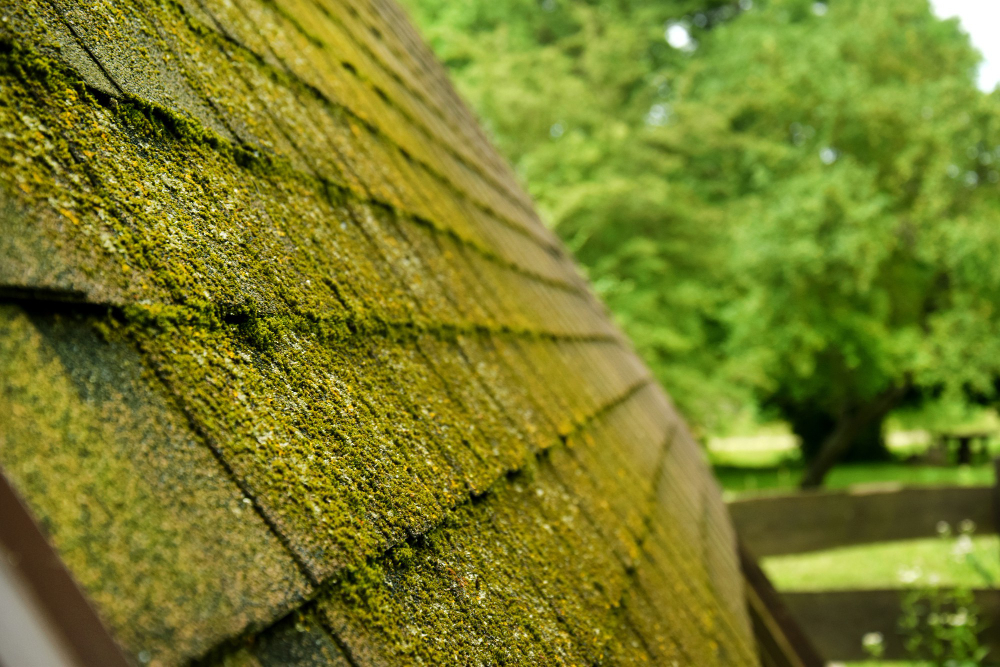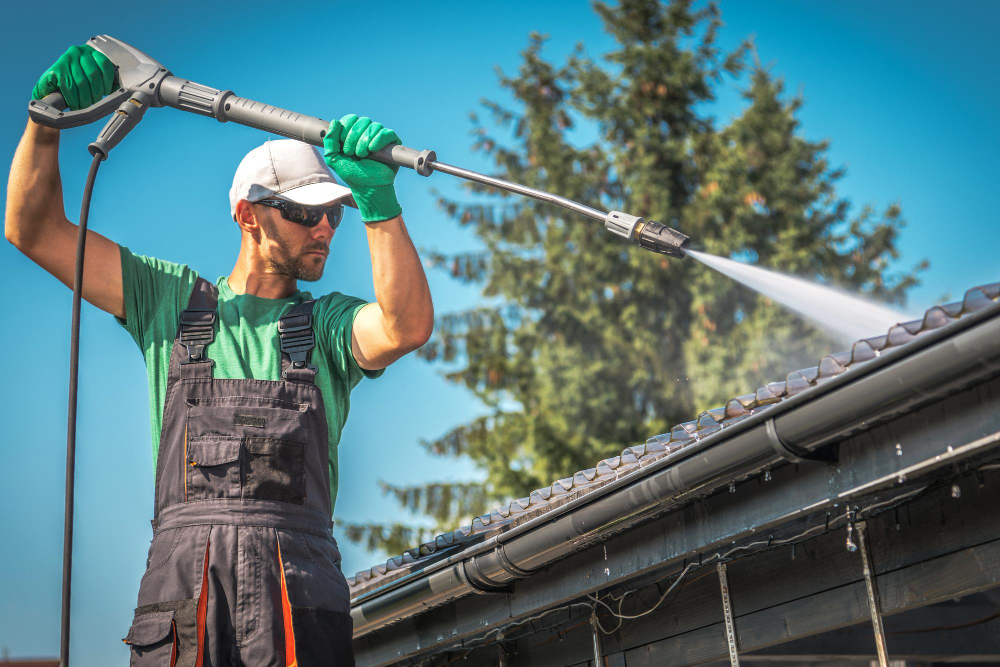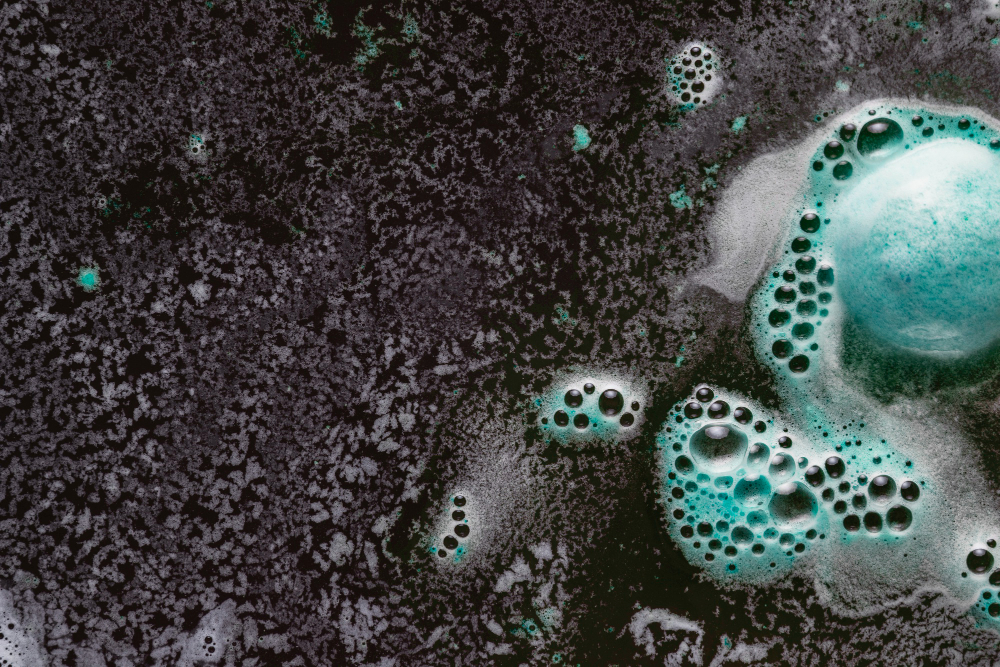Roof moss is a common problem that many homeowners face, especially in areas with damp conditions and wet weather. Moss is a type of plant that thrives in shaded, moist environments, making roofs an ideal location for its growth. It typically appears as a greenish, fuzzy covering on the roof surfaces, including roof tiles, asphalt shingles, and metal strips. While moss may seem harmless, it can cause serious damage if left untreated. It can retain moisture, leading to the deterioration of roofing materials and potentially causing water damage inside the house. Additionally, moss growth on the roof can block gutters and downspouts, leading to water accumulation and further damage. Therefore, it is crucial to address roof moss promptly to avoid costly repairs and extend the lifespan of the roof.
Disclaimer: The information provided in this article is intended for educational and informative purposes only. It is not meant to replace professional advice from a licensed roofing contractor. If you require additional assistance, we recommend seeking the help of a qualified professional at Advance Roofing LLC, who can provide the necessary expertise and guidance for your specific situation.
The Effect of Roof Moss on Your Home
Roof moss may seem like just a harmless green growth, but it can have a significant impact on the condition of your home. When moss takes hold on your roof, it absorbs moisture, leading to the degradation of roofing materials and causing potential wood rot. This can ultimately result in costly repairs.
One of the main issues with roof moss is its ability to absorb and retain moisture. As moss thrives in damp conditions, it creates the perfect environment for moisture to accumulate. As it grows and spreads, moss fills the gaps between roof tiles, compromising the roof’s ability to keep out moisture. This can lead to lifting and exposure of the underlying materials to the elements.
Over time, the moisture absorbed by moss can cause the degradation of roofing materials, such as asphalt shingles, and the rotting of underlying wood. This not only weakens the roof’s structure but can also result in water damage inside your home.
To prevent the damaging effects of roof moss, it’s important to remove it promptly and take preventive measures. Regular maintenance, such as manual removal or the use of chemical treatments, can help keep your roof moss-free. Additionally, installing zinc strips or moss-killing granules can provide long-term protection against moss growth.
Best Time for Removing Moss from the Roof
Removing moss from the roof is an essential step in maintaining its integrity and preventing costly repairs. The ability of moss to absorb and retain moisture can lead to the degradation of roofing materials and potential water damage to your home. To effectively address roof moss, it’s crucial to choose the best time for removal. This section of the article will guide you on the ideal time of year for moss removal and when to apply moss killer, ensuring the utmost effectiveness in preserving the condition and longevity of your roof.
Summer Months

The summer months are the ideal time to remove moss from your roof for several reasons.
- Firstly, during this time, moss enters a dormant state due to the hot and dry weather conditions. This dormancy makes it easier to scrape off the moss without causing any damage to the roof surface.
- Removing moss during the summer months also has the advantage of preventing its regrowth for a longer period. By eliminating moss during this time, you can ensure a moss-free roof for an extended period, saving you from the hassle of frequent cleanings.
However, working under the hot sun requires some precautions. It is essential to stay hydrated by drinking plenty of water during the process. Wearing appropriate protective clothing, such as long sleeves, a hat, and sunglasses, is crucial to shield yourself from harmful UV rays.
It’s also a good idea to work early in the day or late in the afternoon to avoid the peak heat hours. Additionally, taking regular breaks in shaded areas can help prevent overheating and fatigue.
Winter Months
During the winter months, moss on the roof can have detrimental effects on its integrity and longevity. As temperatures drop, freezing conditions create a perfect environment for moss growth. Moss that accumulates on the roof during this time expands as it freezes, causing it to crack or lift roof tiles.
The expansion of moss in freezing temperatures can lead to significant damage to the roof. Cracked or lifted roof tiles create an entry point for water, snow, and ice, resulting in leaks and potential water damage. This, in turn, can lead to costly repairs and even the need for a full roof replacement.
It is crucial to address moss growth on the roof during the winter months to prevent these issues from occurring. Removing moss and applying preventive measures, such as zinc strips or moss killer, can help inhibit moss growth and protect the roof’s structural integrity.
To ensure the safety and effectiveness of the process, it is recommended to hire professional roofing contractors who are experienced in winter roof maintenance. They have the necessary equipment, such as safety ropes and harnesses, to carry out the task safely.
Dry Weather
Dry weather is a favorable time for removing moss from the roof for several reasons.
- Firstly, the lack of moisture during this period inhibits the growth and spread of moss. Moss thrives in damp conditions, so dry weather provides optimal conditions for effective moss removal. Without moisture, moss cannot attach itself firmly to the roof surfaces, making it easier to remove.
- Additionally, dry weather allows for better access to the roof and safer working conditions. Wet conditions can make the roof slippery and increase the risk of accidents during moss removal. In contrast, dry weather provides a stable surface, reducing the chances of slips and falls.
- During dry weather, manual removal methods, such as using a stiff brush or scraping, are more effective. Moss becomes easier to dislodge and remove, ensuring a thorough cleaning of the roof.
- Moreover, applying chemical treatments during dry weather is more effective. Chemical sprays and preventive measures, such as zinc strips or protective granules, need dry conditions to properly adhere to the roof and inhibit future moss growth.
Wet Weather
Wet weather provides the perfect environment for moss growth on roofs and is less sutable for the remaval process. Rain, combined with the moisture and shade that roofs often receive, create a damp and favorable habitat for moss to thrive. As moss spreads, it can cause significant damage to the roof surfaces and compromise its structural integrity.
To combat moss growth caused by wet weather, implementing preventive measures is crucial. Regular inspections are important to identify any early signs of moss growth and address them promptly. Additionally, keeping gutters clean and ensuring proper drainage away from the roof helps minimize dampness and reduce the likelihood of moss formation.
In cases where moss growth is already present, chemical treatments can be effective in removing and preventing its return. However, it is important to apply these treatments during dry weather for maximum effectiveness. The dry conditions allow the chemicals to adhere properly to the roof’s surface and inhibit future moss growth more effectively.
Different Methods of Removal
When it comes to removing moss from your roof, there are several effective methods to consider. One common method is pressure washing, which uses high-powered water jets to blast away the moss. Another option is manual removal, which involves physically scraping or brushing off the moss. Chemical treatments are another popular choice for removing moss. No matter which method you choose, it’s essential to consider the safety precautions necessary when working on the roof, such as using proper equipment and having a safety harness in place. By utilizing these different methods of removal, you can effectively eliminate moss from your roof and protect its overall condition.
Manual Removal
Manual removal is an effective method for getting rid of moss from your roof. It involves using a broom or similar tool to physically brush off the moss, ensuring not to cause any damage to the roofing materials. Here’s a step-by-step process for manual moss removal:
1. Ensure safety: Begin by prioritizing safety. Wear appropriate protective gear such as gloves, safety glasses, and sturdy footwear. It’s also necessary to use a sturdy ladder or safety harness to prevent accidents.
2. Choose the right tool: Select a broom or brush with stiff bristles that can effectively remove the moss without causing damage. Avoid using metal tools that can scratch or scrape the roof surface.
3. Start brushing: Begin at the top of the roof and work your way down, brushing off the moss in a gentle but firm manner. Use long, sweeping motions to remove as much moss as possible without harming the roof tiles or shingles.
4. Collect the moss: As you brush off the moss, collect it in a bag or container to prevent it from falling onto the ground or into the gutters. This will make cleanup easier.
5. Clean up: After completing the manual removal process, clean the roof surface with a gentle spray from a garden hose to remove any remaining debris.
By following these simple steps, you can successfully remove moss from your roof without causing damage to the roofing materials. Remember to prioritize safety and take preventative measures to avoid costly repairs in the future.
Pressure Washing/Water Pressure

When it comes to removing moss from your roof, pressure washing can be an effective method. By using the power of water pressure, you can easily eliminate moss growth and restore the aesthetics of your roof. However, it’s important to proceed with caution and take certain precautions to avoid potential risks.
One potential risk of pressure washing is the use of excessive water pressure, which can cause damage to your roof shingles. It’s crucial to use the proper water pressure and techniques when pressure washing your roof. High water pressure can dislodge shingles or remove protective granules, leading to costly repairs or premature roof replacement.
To avoid causing harm to your roof, it’s recommended to use a lower water pressure setting and maintain a safe distance from the roof surface. Additionally, it’s important to use a wide-angle spray nozzle instead of a concentrated one, as this distributes the water evenly and prevents any potential damage.
Before using pressure washing as a method to remove moss from your roof, it’s advisable to consult with professional roofing contractors or experts. They have the knowledge and experience to ensure that the proper techniques are applied, minimizing any risks and maximizing the effectiveness of the process.
Chemical Treatments

Chemical treatments can be an effective method for removing moss from your roof. Unlike manual removal or pressure washing, these treatments provide a thorough and long-lasting solution. However, it’s important to apply these treatments during the right season for optimal results.
The best time of year to apply chemical treatments for moss removal is typically during the summer months when moss growth becomes dormant. This ensures that the treatment can effectively penetrate the moss and prevent regrowth. Applying the treatment during wet weather or the winter months may not yield the desired results as the moss may already be active and less receptive to the chemicals.
There are several ways to apply chemical treatments to your roof.
- One option is to use products that can be attached to a garden hose, allowing for a convenient and even application.
- Another method is to mix the chemical treatment and apply it directly while on the roof, following the manufacturer’s instructions.
When using chemical treatments, it’s essential to follow all safety guidelines and wear protective equipment. Additionally, it’s recommended to consult with professional roofing contractors or experts for guidance on the best products and application methods for your specific roof type.
Zinc Strips
In addition to chemical treatments, another effective method to prevent moss buildup on the roof is the use of zinc strips. These metal strips can be installed under the top row of shingles and work by releasing small metal particles into precipitation, which in turn inhibits moss growth.
To install zinc strips, begin by lifting up the top row of shingles near the roof ridge. Then, secure the metal strip underneath using roofing nails. Make sure to leave a small gap between each strip to allow for water runoff.
As rainfall occurs, the water will come into contact with the metal particles from the zinc strip. This creates an environment that is less favorable for moss growth, making it an excellent preventive measure.
Zinc strips are a simple and cost-effective way to protect your roof from moss buildup. By inhibiting moss growth, you can prevent potential damage to your roof surfaces and avoid costly repairs.
It is important to note that while zinc strips can be effective in preventing moss growth, they are not a solution for existing moss problems. If you already have moss on your roof, it is recommended to remove it manually or use chemical treatments before installing zinc strips.
Roof Cleaning Services
Roof cleaning services can help maintain the appearance and longevity of your roof. Hiring a professional roof cleaner is an excellent option for homeowners who want to ensure a thorough and safe cleaning process.
Professional roof cleaners have the experience and expertise to effectively remove moss, algae, dirt, and debris from your roof. They use specialized equipment and techniques to provide a deep and gentle clean without causing any damage to the roof’s surface.
The cost of hiring a professional roof cleaner will vary depending on the size and condition of your roof. On average, homeowners can expect to pay between $300 and $600 for a professional roof cleaning service. While this cost may seem high, it is important to remember that regular roof maintenance can prevent costly repairs in the long run.
Chemical washes are a common method used by professional roof cleaners to remove moss and algae. These specially formulated solutions effectively kill and remove the organic growth, leaving your roof looking clean and spotless.
Cost Considerations for Removing Moss from the Roof
When it comes to removing moss from your roof, there are several cost considerations that homeowners should be aware of. Factors such as the size of the roof, severity of moss growth, and method of removal can all impact the overall cost of the project.
- The size of your roof plays a significant role in determining the cost of moss removal. Larger roofs require more time, labor, and materials, resulting in a higher overall cost. Additionally, if your roof has a complex design with many angles and slopes, it may take longer to remove the moss, further increasing the cost.
- The severity of the moss growth on your roof is another important consideration. If the moss has spread extensively, it may require more time and effort to remove, resulting in higher costs. It’s important to address moss growth as soon as possible to avoid further damage to your roof.
- The method of removal also affects the cost. Manual removal using a stiff brush or scraping tool tends to be more time-consuming and labor-intensive, which can increase the overall cost. Alternatively, chemical treatments or pressure washing can be more efficient but may come with additional costs.
- While the average cost of moss removal ranges from $300 to $1000, it’s recommended to get a professional estimate to get a more accurate understanding of the specific cost for your roof. Professional roofers can assess the size, severity, and method of removal needed for your roof, providing you with a more precise cost estimate.
Conclusion
Removing moss from your roof is an important step to maintain the health and appearance of your roof. While it can be a costly process, regularly removing moss will help extend the lifespan of your roof and prevent costly repairs in the future. The best time to remove moss from your roof is summer. By addressing any moss growth before winter sets in, homeowners can ensure their roof stays clean and protected throughout the cold months.



 509-201-4190
509-201-4190
